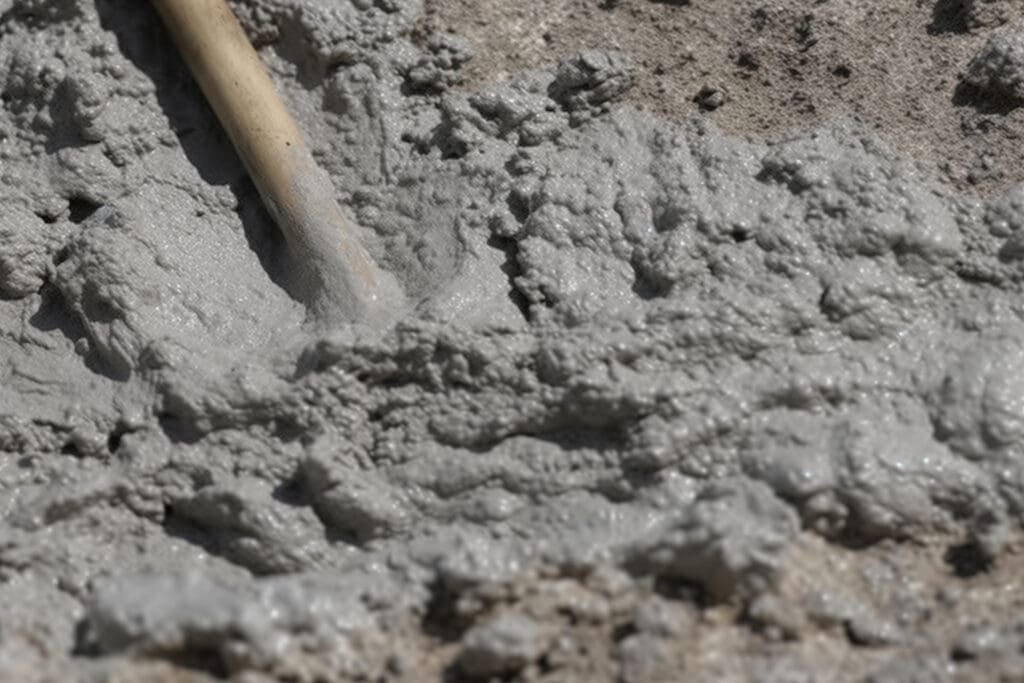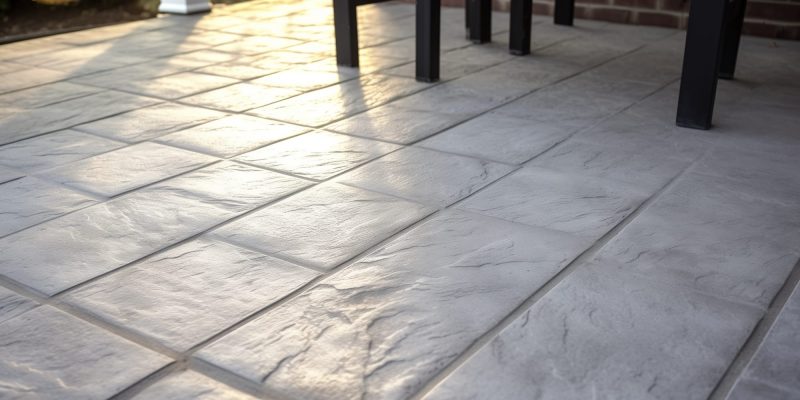Welcome to the world of stamped concrete, a fantastic way to beautify your Des Moines home! This guide is crafted to help you step-by-step in creating an impressive stamped concrete surface on your own. Perfect for patios, walkways, or driveways, this DIY project will elevate your outdoor space with a touch of style and durability.
Understanding Stamped Concrete
Stamped concrete is a creative way to simulate high-end materials like stone, brick, or wood, using concrete. It involves pouring slab concrete for your driveway, sidewalk, or patio, and then impressing both patterns and textures onto the concrete before it fully sets.
For homeowners in Des Moines, it’s a cost-effective alternative to actual brick or stone paving. Not only does stamped concrete boost your home’s curb appeal, but it’s also renowned for its longevity and ease of maintenance. It withstands our varied Iowa weather, making it an excellent choice for both functionality and aesthetic appeal. Plus, its versatility in design means you can customize it to match your home’s style, whether you’re going for a modern look or a traditional feel.
Tools and Materials Needed
Before diving into your project, gather all the necessary tools and materials. You’ll need:
- Concrete mix: Choose a high-quality mix for best results.
- Concrete stamps: These are available in various patterns and textures.
- Coloring agents: If you desire a specific color, integral coloring agents can be mixed into the concrete.
- Release agent: This prevents the stamps from sticking to the concrete.
- A bull float: To smooth the concrete.
- A tamper: For imprinting the design into the concrete.
- Sealer: To protect the finished surface.
TIP
In Des Moines, many local hardware stores and home improvement centers stock these items. Opt for quality materials to ensure the longevity of your stamped concrete. The right tools will make your work easier and more efficient, leading to a better end result.
Preparing Your Site
Site preparation is crucial for a successful stamped concrete project. Start by choosing a dry, level area. Clear the space of any debris, grass, or stones. Next, frame the area using wooden boards as forms, ensuring they’re secured and level. This will define the boundaries of your concrete surface. For drainage, ensure a slight slope away from your home.
In Des Moines, considering our rainfall patterns, proper drainage is essential to prevent water pooling on your stamped surface. After setting up your forms, compact the ground beneath. You can rent a compactor from a local tool rental company for this purpose. This step ensures a stable base for your concrete, preventing future cracking or shifting. Remember, a well-prepared base is key to the longevity of your stamped concrete.
Mixing and Pouring Concrete

Mixing concrete is a critical step. Follow the instructions on your concrete mix bag precisely, aiming for a consistency that’s moist but not too runny. If it’s your first time, consider practicing on a small area to get a feel for the correct consistency. Once mixed, pour the concrete into the forms you’ve set up. Spread it evenly with a shovel, and then use a bull float to smooth the surface. It’s essential to work quickly but carefully, as concrete begins to set within a few hours.
NOTE
In Des Moines, due to our climate, it’s advisable to check the weather forecast before starting. Avoid pouring concrete on extremely hot or cold days, as this can affect how the concrete sets and cures. If it’s too hot, the concrete might dry too quickly, making it difficult to stamp. Too cold, and it won’t set properly.
Once the concrete is poured and leveled, let it sit until it’s firm enough to hold an imprint without being too soft or too hard. This stage is critical; if the concrete is too soft, your stamps will sink in too deeply. If it’s too hard, it won’t take the stamp at all. A good rule of thumb is to press your finger into the surface; it should leave a slight imprint without sinking.
Adding Color and Patterns
Coloring and patterning your concrete is where creativity comes into play. In Des Moines, consider colors that complement your home and landscape. Integrating a color into your concrete mix ensures a uniform shade. You can also apply a color hardener for more vibrant hues. Next, it’s time to stamp. Choose a pattern that suits your style – brick, stone, wood, or something more abstract.
Begin stamping at the corner of your area and work your way across. Press the stamp firmly into the concrete using a tamper. It’s essential to overlap the previous section slightly to ensure a continuous pattern without visible seams. Do this gently to avoid double impressions. If it’s a sunny day, you might want to dampen your stamps slightly to prevent them from sticking to the concrete.
Remember, timing is crucial. If the concrete is too soft, the stamp will sink too deep. If it’s too hard, the pattern won’t imprint well. This step requires patience and a bit of practice, so don’t get discouraged if your first few attempts aren’t perfect.
Finishing Touches
After stamping, let your concrete set for about 24 hours. Then, it’s time for the finishing touches. Apply a sealer to protect your stamped concrete from wear and tear, and to enhance its color, especially under Des Moines’ variable weather conditions. Sealers also make the surface easier to clean and maintain.
Apply the sealer evenly with a sprayer or roller, ensuring no puddles form. Once the sealer dries, you’ll notice your stamped concrete’s color deepening and its pattern more pronounced. This sealer should be reapplied every few years, depending on the wear and exposure it receives.
Maintenance Tips
Maintaining your stamped concrete is straightforward. Regular cleaning with a hose or a mild detergent keeps it looking fresh. Avoid using harsh chemicals, as they can damage the sealer and the concrete. In winter, use sand instead of salt for de-icing, as salt can erode the surface.
Every few years, assess your stamped concrete for any cracks or wear. Reapplying sealer can restore its luster and prolong its life. In Des Moines, where we experience a range of weather conditions, this regular maintenance ensures your stamped concrete stays beautiful for years.
Common Mistakes to Avoid
When DIY-ing stamped concrete, be mindful of these common mistakes:
- Rushing the process: Take your time, especially when mixing and pouring concrete.
- Inconsistent thickness: Ensure your concrete is evenly spread to avoid weak spots.
- Overworking the surface: Over-tamping or over-smoothing can affect how the concrete accepts the stamps.
- Neglecting weather conditions: In Des Moines, weather can significantly impact your project. Choose a day with mild temperatures for best results.
Conclusion
Congratulations, you’re now equipped to tackle a stamped concrete project in your Des Moines home! This guide has walked you through each step, ensuring you can create a durable, stylish surface that enhances your outdoor living space. Remember, patience and attention to detail are key. Happy stamping!

